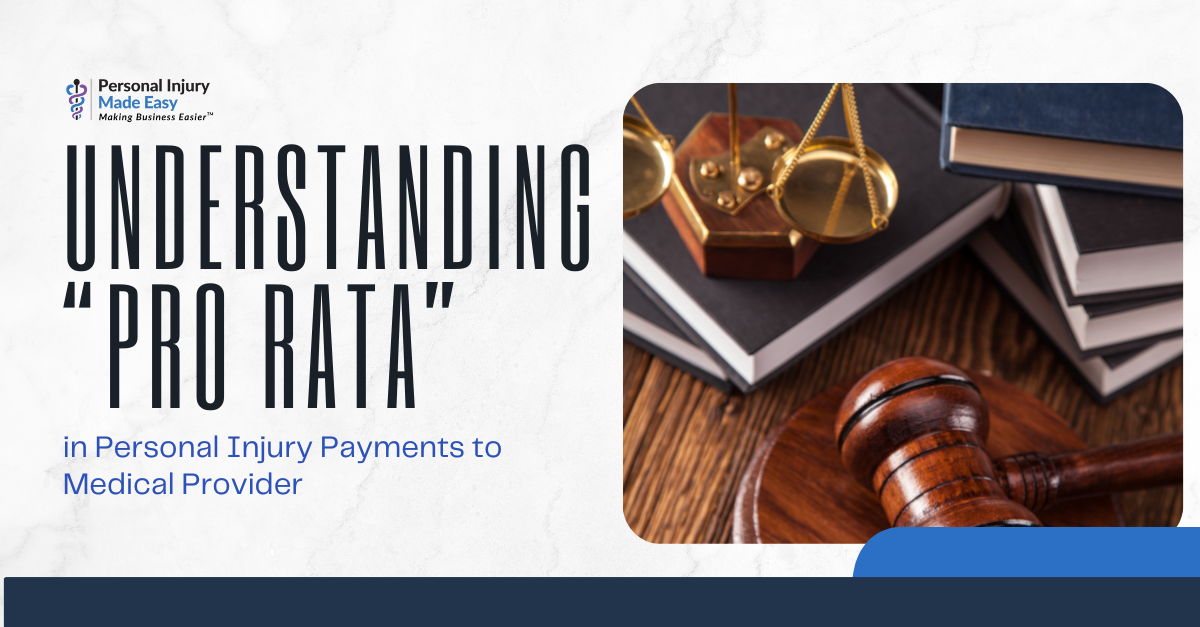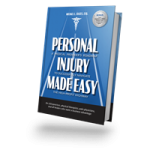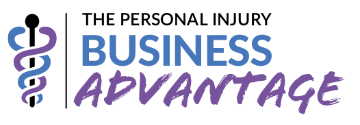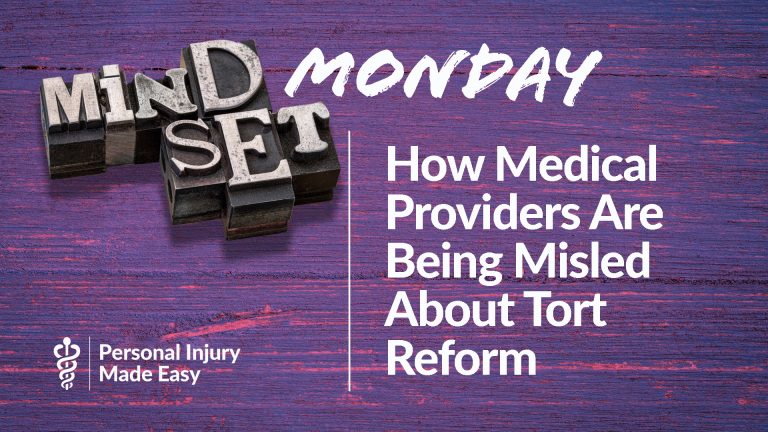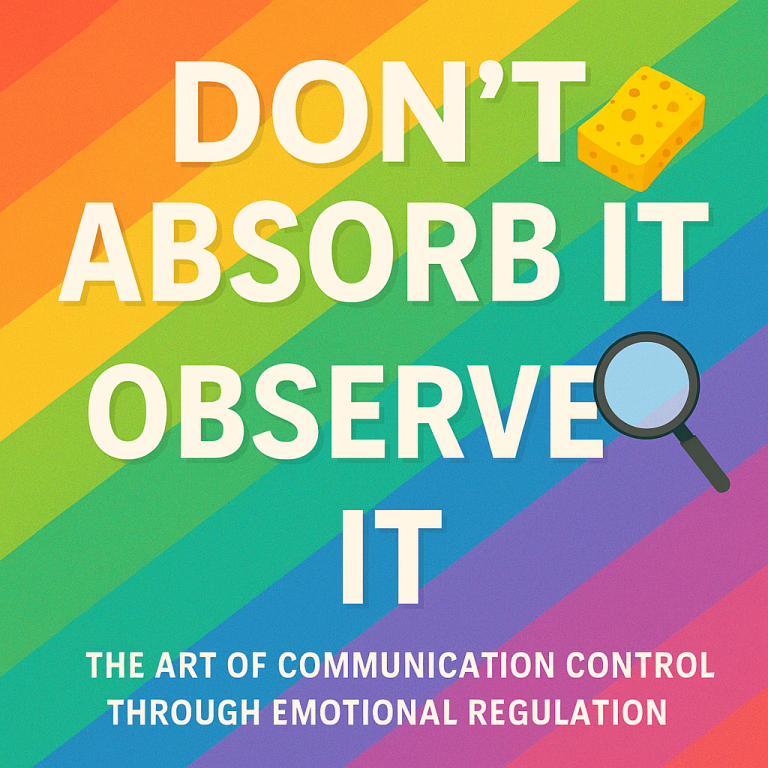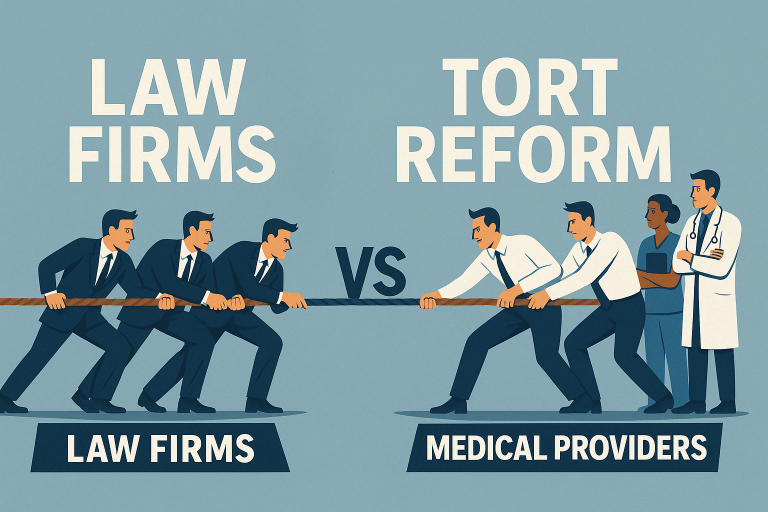
How Close Is Too Close? Navigating Law Firm Relationships
The Essential Balancing Act Between Profit and Protection
Let’s get straight to it. This is about the balancing act of law firm–medical provider relationships.
In the personal injury (PI) space, the relationship between medical providers and law firms is valued highly. If you follow me, you know I believe in growing the PI segment of a medical practice primarily through patients and peers. However, I also believe in strategic law firm growth. Growing the “right” law firm relationship and cutting out or outsourcing for payment the “wrong” ones.
Here’s why I don’t have those I coach, teach, and train focus solely—or even primarily—on growth through law firms: Because sometimes, too much of a good thing… isn’t a good thing at all.
Yes, patients may be referred and cross-referred. But what is the quality and dynamic of that relationship? The question isn’t whether to build connections with law firms—it’s how deep, how often, and how smartly those connections should be built.
And the answer is as with most complex things? I don’t think so.
At the heart of the matter are two essential metrics:
- ROI – Return on Investment of your time, talent, and team.
- ROR – Return on Relationship, which can be your greatest asset—or your biggest liability.
If you don’t balance ROI and ROR consistently and strategically, you risk overcommitting to the wrong partners and under-protecting yourself in ways that can seriously threaten your business.
Let’s explore this complex dance with law firms: the upsides, the dangers, and how to maintain control of your PI destiny.
When the Relationship Works—And Works Well
When law firm partnerships go right, they can supercharge your profits and growth:
- Consistent Patient Flow – You’ve become the go-to for injury healthcare referrals.
- Revenue Boost – You’re billing out-of-network rates and treating more patients.
- Credibility Lift – Your professional standing is elevated to the legal profession.
- Compounding Trust – When you avoid PI mistakes, deliver storytelling documentation, communicate clearly, and bill reasonably and supportably, you become an indispensable ally to both the firm and its clients.
These relationships are not just functional—they’re mutually beneficial. The lawyer’s clients get excellent care. The cases get stronger, often with higher settlement value when done right. And you get paid—well and on time. That’s the dream.
When the Relationship Turns Toxic
When things go south? They can crash hard.
- One-Way Expectations – The law firm wants to control referrals, imaging, and treatment decisions—and demands steep discounts as decide on your bills.
- Taken Hostage – Your threatened with blacklisting in the PI legal community if you don’t go along and play along, their way.
- AR Bloat – You’re left with dozens (sometimes hundreds) of unpaid cases, totaling hundreds of thousands—or even millions—at risk.
- Disregard for Expertise – Your clinical insight, which fuels the pain and suffering claim, is reduced to just another line item.
- Disrespect for Your Value – Your treatment, documentation and healing, used to help get the PI case recovery, are then disrespected post-settlement with assertions and attacks of overtreatment and overbilling if you don’t see payment of your bill their way.
The biggest trap? Being seen as expendable.
When I was a young attorney, and later a young partner, I heard associates referred to by some senior partners as “fungible billing units.” Easily replaced unless they brought in a lot of business. That same disposable mindset is how many law firms treat PI medical providers.
If you’ve become “just another provider” in a firm’s rotation used to balancing settlements by
slashing your bill—you’re no longer in a relationship. You’re in a transaction.
And when that happens, the risks start to outweigh the rewards.
When a Law Firm Relationship Becomes a Business Killer
Here’s a true story—one that still gives me chills, and yet also offers hope.
A provider in California enrolled in my coaching program and retained my outsourced negotiation services. He had over 150 active PI matters tied to a single law firm. At first, things were smooth. Cases flowed. Collections were coming in. The team was busy.
Then, the first five settlement offers arrived.
Each one was for just 20 cents on the dollar.
He panicked.
With hundreds of thousands of dollars in accounts receivable tied up with that one firm, he saw the writing on the wall. If the next 145 cases followed suit, he was staring down a financial collapse. Payroll, rent, and everything else would be on the chopping block.
Thankfully, he didn’t freeze. He asked for help.
Together, we built a negotiation strategy tailored to both his practice and that law firm’s pressure points.
The result? The remaining 145 cases averaged 85% recovery of his full out-of-network charges. A profit game-changer.
That’s the difference between shutting your doors and scaling your practice. That same provider has since expanded his office space and operations.
Why? Because he recognized the danger early—and acted.
Five Smart Strategies for Healthy Law Firm Boundaries
You don’t have to avoid law firm relationships. You just have to approach them and manage them intelligently.
- Track Results
You can’t measure what you don’t track. So, track payment performance. Data doesn’t lie. Most providers think they’re being treated fairly—until the data proves otherwise. That’s why I give all my members customized tracking spreadsheets. - Diversify Your PI Patient Intake
Don’t just chase “better” law firms. Build your PI segment through patients and peers, as I coach extensively. Referrals from non-legal sources are often more stable and less risky. And find more and more “good” law firms, and diversify your law firm mix. - Protect Your Role & Your Bill
Stay in your lane. Don’t comment on accident mechanics. Use robust, attorney-signed lien agreements—not the generic ones that lack favorable terms and enforceability. Most providers are unknowingly under-protected. My members? Not a chance. - Deliver Value
You see the patient far more than the attorney. Leverage that. Address gaps, document thoroughly, explain causation, and apply what I term and coach on: storytelling documentation. That’s how you raise case value and become a key player—not a replaceable vendor. And that’s why I created my coaching program called The Business Advantage Program, focused on three segments: PI processes, profits and growth. - Negotiate Smartly
Never pre-agree to reductions (it’s a legal landmine). Don’t cut blindly. Train your team in negotiation—or outsource it to pros. That’s why I created Negotiations Aikido to train medical offices to negotiate themselves, and PI Billing Pros, so offices can outsource to Negotiations Aikido Master (me). Because negotiating with lawyers is a contact sport—and your ROI and ROR hinge on how well it’s played.
Final Thoughts: Know Your Metrics, Guard Your Boundaries
Here’s your new PI mantra: Evaluate your ROI and ROR for every relationship. Regularly. Ruthlessly. And act decisively.
Ask yourself:
- Am I getting a fair return on my time and effort?
- Is this relationship respectful and reciprocal?
- Am I being used—or truly partnered with?
- Should I walk—or should I outsource to reclaim control?
PI, when done right, is still the most profitable and scalable part of a modern healthcare practice.
But it demands vigilance.
Stay smart. Stay guarded. Stay proactive.
Because whether a law firm becomes your salvation—or your downfall—is often up to you.
Catch problems early. Set firm boundaries. And remember: You have leverage. You have options. Use them wisely.


